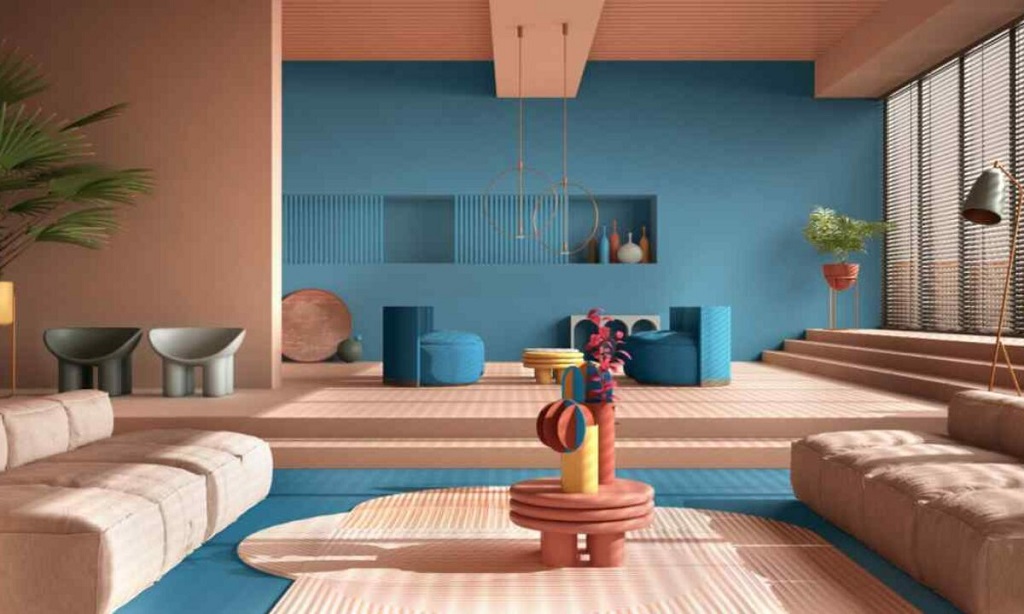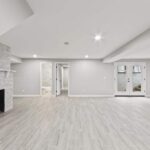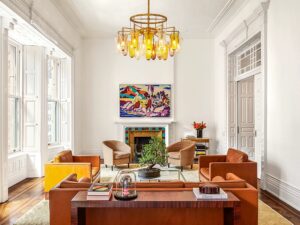
The living room is the heart of the home. It’s a space for relaxation, entertainment, and gathering with loved ones. The right paint color sets the tone for this central space, influencing the mood and atmosphere. But choosing the perfect hue can feel overwhelming. Fear not! This guide explores “living room colour chemistry,” helping you unlock the secrets of color combinations and select the ideal palette for your unique style.
Understanding Colour Psychology: How Colours Affect Mood
Colours have a profound psychological impact, influencing our emotions and how we perceive a space. Here’s a breakdown of some key colours and their associated moods:
- Warm Colours: Reds, oranges, and yellows evoke feelings of warmth, energy, and excitement. These colours can be perfect for creating a vibrant and inviting living room.
- Cool Colours: Blues, greens, and purples are considered cool colours. They promote feelings of calmness, relaxation, and serenity. Cool colours are ideal for creating a tranquil and peaceful living room.
- Neutrals: Whites, greys, and beiges are versatile neutrals. They offer a clean slate and can be paired with bolder accent colours to create a sophisticated or minimalist look.
Considering Your Style: Matching Colour to Your Vision
The perfect colour combination depends on your style and the desired atmosphere for your living room. Here are some popular styles and colour palettes to inspire you:
1. Modern Minimalism:
- Colour Palette: Embrace clean lines and a sleek aesthetic with a neutral base of white, grey, or beige. Add pops of colour with bold accent pieces like artwork or throw pillows in black, navy blue, or emerald green. Metallic accents like gold or silver can further enhance the modern feel.
2. Cozy Comfort:
- Colour Palette: Create a warm and inviting atmosphere with earthy tones like beige, taupe, and light brown. Accentuate with warm colours like burnt orange, mustard yellow, or terracotta. Consider incorporating natural textures like wood and woven fabrics to complete the cozy look.
3. Coastal Retreat:
- Colour Palette: Bring the serenity of the beach into your living room with a cool colour palette. Light blues, seafoam greens, and sandy beiges evoke a sense of calmness and relaxation. Accentuate with navy blue or crisp white for a nautical touch. Woven textures and natural materials like sisal rugs and seashells can further enhance the coastal theme.
4. Vibrant Eclecticism:
- Colour Palette: Embrace bold colours and playful patterns if you have an eclectic personality. Consider colour blocking with contrasting colours like turquoise and mustard yellow, or teal and orange. Don’t be afraid to mix patterns, but ensure they share a common colour thread to maintain visual coherence.
Colour Theory in Action: Creating Harmonious Palettes
Understanding basic colour theory principles can help you create stunning and harmonious colour combinations for your living room:
-
The Colour Wheel: The colour wheel is a valuable tool that visually organizes colours based on their relationships. Analogous colours sit next to each other on the wheel and create a harmonious and calming effect. Complementary colours are opposite each other on the wheel and create a high-contrast, vibrant effect. Triadic colours are three colours evenly spaced on the wheel and offer a dynamic and balanced palette.
-
The Rule of 60-30-10: This popular design rule suggests using three colours in your living room. The dominant colour (60%) should be your base colour, often a neutral. The secondary colour (30%) should be a bolder accent colour. The accent colour (10%) can be used sparingly for pops of colour or details.
Beyond Colour: Additional Factors to Consider
While colour is a crucial element, other factors influence your living room’s overall look and feel:
-
Lighting: Natural light plays a significant role in how colour is perceived. If your living room has ample natural light, you can opt for bolder colours. For rooms with less natural light, consider lighter colours to create a sense of spaciousness.
-
Furniture: The colour and style of your furniture will influence your paint colour selection. If your furniture has bold colours or patterns, consider a neutral paint colour to create visual balance.
-
Flooring: The colour of your flooring can also impact the overall colour scheme. Light-coloured floors can accommodate a wider range of paint colours, while darker floors might benefit from lighter paint colours to avoid a cave-like feel.

Putting it All Together: Tips for Selecting the Perfect Colour Combination
Here are some final tips to help you finalize your living room colour palette:
-
Sample, Sample, Sample: Don’t rely solely on paint swatches! Purchase paint samples and apply them to your living room walls in inconspicuous areas. Observe how the colour looks throughout the day in different lighting conditions.
-
Consider the Big Picture: Think beyond just the paint colour. Visualize how the chosen colour will interact with your existing furniture, flooring, and decor.
-
Seek Inspiration: Browse online resources, magazines, and design blogs for colour palette inspiration. Pay attention to how different colours are used together and what kind of atmosphere they create.
-
Don’t Be Afraid to Experiment: Living rooms are meant to reflect your personality! While following colour theory principles can be helpful, don’t be afraid to experiment and create a unique colour combination that speaks to you.
Related: 10 Ideas of orange paint colors for living room
Conclusion: Living in Colourful Harmony
Choosing the right living room colour combination doesn’t have to be a daunting task. By understanding colour psychology, considering your style, and utilizing the power of colour theory, you can create a living space that is not only aesthetically pleasing but also reflects your personality and fosters a desired mood. So, grab your paint samples, unleash your creativity, and get ready to transform your living room into a vibrant and inviting haven!






